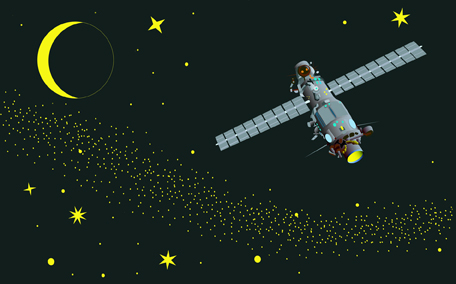Lesson 1
1. Lesson 1
1.12. Connect
Module 2: Probability
Complete the Lesson 1 Assignment that you saved in your course folder at the beginning of the lesson. Show work to support your answers.
![]() Save your responses in your course folder.
Save your responses in your course folder.
Project Connection
You are ready to start working on Module 2 Project. Go to the Module 2 Project: Carnival Probabilities, and read Project Overview to become familiar with what you will be doing and how you will be assessed. At this time, only read through the project. You will begin the project in Lesson 2.
Going Beyond
Sometime on September 24, 2011, NASA’s Upper Atmosphere Research Satellite (UARS) fell to Earth and plunged into the Pacific Ocean. There is always concern about someone being hit when an object falls “from the sky.” The chances, however, of being hit are extremely small and there are calculations done to prove it.

Hemera/Thinkstock
According to NASA’s calculations, the odds in favour of a person being hit are 1 : 3200, and the odds of you being hit are even more remote at 1 : 22 400 000 000 000.
But how are these odds calculated—and are they believable? Try to find information about how these odds were calculated.